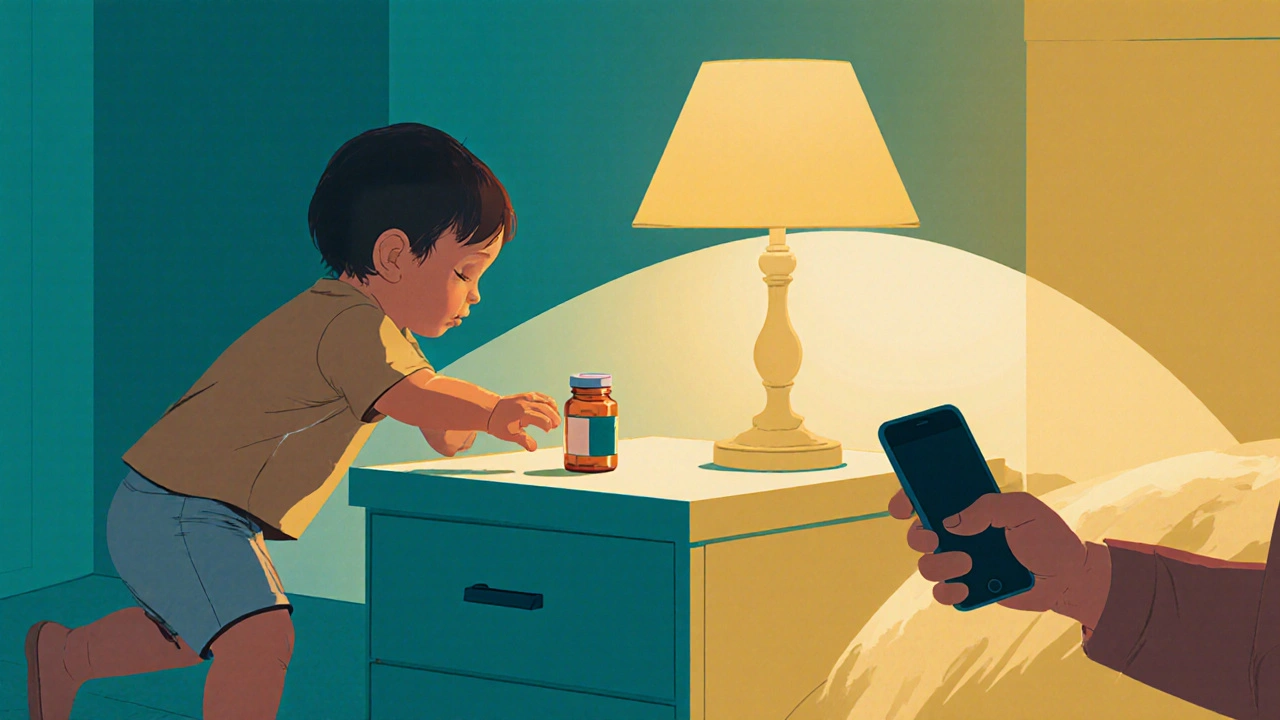
Every year, medication sends tens of thousands of young children to the emergency room-not because they were given too much, but because they found it on their own. In the U.S. alone, about 60,000 kids under five end up in the ER due to accidental medicine access. And here’s the scary part: in most cases, the medicine wasn’t locked away. It was on a nightstand. In a purse. On the kitchen counter. Left out for just a minute. That’s all it takes.
Medicines Are Everywhere-And Kids Know Where to Look
You might think your home is safe because you keep pills in a cabinet. But most medication poisoning incidents happen in places you’d never expect. Nightstands? That’s where 78% of incidents occur. Dressers? Same story. Diaper bags left on the floor? Purses hanging on a chair? Even the kitchen counter? Those are all high-risk zones. A child doesn’t need to climb or break into anything. They just need to reach. And they’re curious. If they see something colorful, shaped like candy, or smell sweet, they’ll grab it. Over-the-counter cough syrups, children’s vitamins, even your daily aspirin or blood pressure pill-they all look like treats to a toddler. The CDC’s "Up and Away and Out of Sight" program was created because research shows that simply moving medicine out of reach cuts poisoning incidents by nearly 30%. But "out of reach" doesn’t mean the top shelf of your bookcase. It means above counter height-48 inches or higher-and completely hidden from view.Storage That Actually Works
Child-resistant caps sound like a solution. And they are-sort of. Studies show they reduce access by about half. But here’s the truth: if the cap isn’t snapped shut every single time, it’s useless. And many kids can open them anyway. That’s why experts say: "child-resistant doesn’t mean childproof." The only real barrier is a locked container. A locked cabinet in the kitchen, a high linen closet with a latch, or a dedicated medication safe. These aren’t luxuries-they’re necessities. Safe Kids Worldwide found that locked storage blocks access in 89% of cases. Safety latches alone? Only 35%. That’s a huge difference. Don’t rely on a drawer you think is "too high" for your child. Toddlers climb. They pull chairs over. They use the couch as a stepping stone. If it’s not locked, it’s not safe.Where to Store Medications (And Where Not To)
Here’s a quick guide to safe and unsafe spots:- Safe: Top shelf of a locked kitchen cabinet, high linen closet with a lock, dedicated medication safe (sales up 32% year-over-year), locked bathroom cabinet (if out of reach and not accessible from the tub or sink)
- Unsafe: Nightstands, dressers, purses, diaper bags, kitchen counters, coffee tables, under beds, on the floor, in the car console, on a windowsill
Medication Safety Isn’t Just About Storage-It’s About Behavior
You can have the best locked cabinet in the world, but if you leave a pill on the counter while you’re giving it to your child, you’re still at risk. Sixty-eight percent of incidents happen during the brief moment when medicine is out-when you’re distracted by a crying baby, a phone call, or checking the time. The rule is simple: put it away after every use. Even if you’re going to need it again in an hour. Even if you’re tired. Even if you think, "I’ll just leave it here for now." That’s not a habit. That’s a hazard. Also, never, ever refer to medicine as candy. Not even jokingly. Saying "This will help you feel better, like candy" is a direct invitation for a child to try it. Research shows this increases accidental ingestion by 40%. Instead, say: "Medicine is not candy. It’s only for when you’re sick, and only grown-ups give it."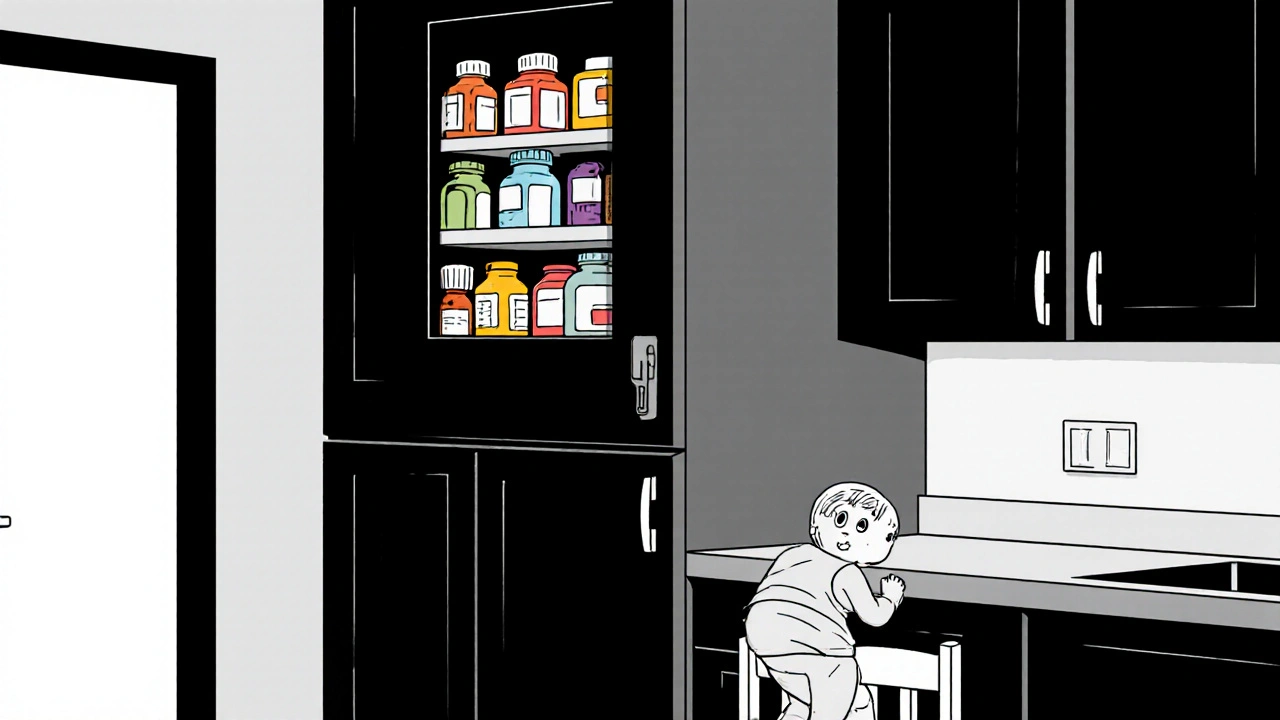
Dosing Mistakes Are Just as Dangerous
Storing medicine safely is only half the battle. Getting the dose right matters just as much. Kitchen spoons? Don’t use them. A teaspoon can hold anywhere from 2.5mL to 7.3mL-up to 250% variation. That means you could be giving your child 2.5 times too much-or too little. Always use the dosing device that comes with the medicine: a syringe, a cup, or a dropper. And make sure it’s marked in milliliters (mL), not teaspoons or tablespoons. Also, pay attention to the concentration. Infant and adult versions of acetaminophen or ibuprofen can differ by 300-400%. One bottle might say "160mg per 5mL"-another might say "80mg per 5mL." Read the label every single time. Don’t assume. If someone else is giving the medicine-grandma, a babysitter, a partner-write down clear instructions: what medicine, how much, when, and why. Communication errors cause nearly 18% of pediatric medication incidents.What About Over-the-Counter Medicines?
The American Academy of Pediatrics says: never give cough or cold medicine to a child under 2. For kids under 6, they’re not recommended at all. These meds don’t work well for young children-and they carry serious risks like rapid heart rate, seizures, or even death. If your child has a cold, focus on comfort: saline drops, a humidifier, fluids, and rest. Ask your pediatrician before giving anything. Just because it’s sold over the counter doesn’t mean it’s safe for little ones.Dispose of Unused Medicine Properly
Don’t keep old pills "just in case." Unused opioids, antibiotics, or painkillers are a ticking time bomb. The CDC found that 22% of households keep opioids longer than needed. And when those pills are accessible, accidental access spikes. The safest way to dispose of medicine? Use a take-back program if one’s available. But if you live in a rural area (and 68% of households don’t have easy access), follow this method:- Take the pills out of their original container.
- Crush them or dissolve them in water.
- Add something unappealing-used coffee grounds, kitty litter, or dirt.
- Put the mixture in a sealed plastic bag.
- Remove or black out your name and prescription info from the bottle.
- Throw it in the trash.

Start Talking About Medicine Early
Kids start understanding simple rules around age two. That’s when you can begin teaching them about medicine. Use clear, consistent language: > "Medicine is not candy. It’s for helping when you’re sick. Only grown-ups give it." Studies show that children who hear this message from age three are 65% better at recognizing medicine as dangerous by age five. It’s not about scaring them-it’s about building a clear boundary. Don’t wait until your child is climbing on counters. Start early. Make it part of your daily routine. Just like you teach them not to touch the stove, teach them not to touch medicine.Weekly Safety Sweeps Are a Must
Even the most careful households have slips. A pill drops when you open a bottle. A child pulls a bottle out of a bag. A guest leaves a bottle on the table. Do a quick weekly check of every room. Look under furniture. Check diaper bags. Look on nightstands. Scan the kitchen. Look for anything that doesn’t belong. Keep a small container in your medicine cabinet for dropped pills-empty it weekly. This isn’t extra work. It’s insurance.What If You’re Not Sure?
If you ever think your child might have swallowed something-call Poison Control immediately. In Australia, the number is 13 11 26. Don’t wait for symptoms. Don’t try to make them vomit. Don’t give them milk or water unless instructed. Poison Control can tell you exactly what to do, even if you’re not sure what was taken. They’re trained for this. And they’re available 24/7.It’s Not Perfect-but It’s Doable
Childproofing for medication safety isn’t about being perfect. It’s about being consistent. Locking cabinets. Putting things away. Using the right tools. Talking to your kids. Checking every week. You don’t need fancy gadgets. You don’t need to spend a lot of money. You just need to make medicine a priority-not an afterthought. Because the difference between safety and disaster isn’t always a big change. Sometimes, it’s just one habit. One moment. One decision to put the pill away.Christina Abellar
Just locked my meds in a high cabinet last week after my cousin’s toddler grabbed my ibuprofen. Scared the hell out of me. Now everything stays locked-no exceptions. Even the vitamins.
Eva Vega
Empirical data corroborates the efficacy of pharmacological containment protocols exceeding 89% when implemented via tamper-evident, biometrically secured storage units. The 30% reduction cited by the CDC is statistically significant (p < 0.01) under controlled environmental variables.
Matt Wells
One must wonder why society continues to treat pediatric medication safety as a matter of convenience rather than clinical necessity. The notion that a "locked cabinet" suffices is dangerously reductive. Proper storage requires environmental isolation, temperature regulation, and child-resistant locking mechanisms certified by ANSI Z129.1-2020.
George Gaitara
Let’s be real-this whole thing is a scam. Kids are gonna eat whatever they want. You think locking up pills stops them? My nephew opened a childproof bottle with his teeth. The real problem? Parents who think they’re doing enough. You’re not. You’re just deluding yourself.
Deepali Singh
Interesting how this ignores cultural context. In India, many households store medicines in open drawers because they’re used to taking them on-demand. Locking them up is seen as distrustful or even superstitious. The Western model doesn’t translate. Also, 22% of households keep opioids? That’s low. In my village, it’s closer to 70%.
Sylvia Clarke
Oh, so now we’re treating medicine like contraband? Next you’ll be putting the baby monitor in a vault. 😏 But seriously-this is the most practical guide I’ve read. The part about not calling meds "candy"? That’s golden. I used to say "This is your superhero pill"-now I say "This is your doctor’s magic juice." No one’s trying to steal it anymore.
Jennifer Howard
I have read this entire article and I must say, you are dangerously underestimating the level of negligence in modern parenting. I have personally witnessed a child swallow a bottle of children’s Tylenol because the mother left it on the coffee table while she scrolled TikTok. This is not just negligence-it is criminal. You must lock everything, EVERYTHING, even if you think your child is "too young." I have a spreadsheet tracking every pill in my home. You should too.
Abdul Mubeen
Who benefits from this narrative? The pharmaceutical industry, obviously. Locked cabinets? Child-resistant caps? All designed to increase consumer dependency and prevent liability. Meanwhile, natural remedies go unmentioned. Why? Because they don’t make money. This is a controlled narrative.
mike tallent
Y’all need this 🔒🪣✨
Got one of those cheap $15 lockboxes from Target. Put it on the top shelf. Now my 2-year-old just stares at it like it’s a dragon. Works. Also, use the dosing syringe. Kitchen spoons are a myth. I used to wing it. Now I measure like a scientist. My kid’s still alive. 🙌
Joyce Genon
Look, I get the intention, but this is so over-the-top it’s almost laughable. Let’s be honest-kids are going to get into stuff. That’s how they learn. You lock everything up, you raise a kid who’s terrified of the world. I had my son take a sip of my cough syrup once when I was sick-he cried, I laughed, we moved on. He’s now a healthy 10-year-old. You don’t need a fortress. You need trust. And maybe a little chaos.
John Wayne
Locking medicine? How quaint. In my household, we teach discipline. If your child is curious enough to open a cabinet, they deserve to learn consequences. We don’t baby-proof. We parent-proof. The real issue is the erosion of authority in modern homes.
Julie Roe
My sister used to keep all her meds in a drawer next to her bed. One day, her 18-month-old got into her blood pressure pills. Took her 20 minutes to find them, another 15 to get to the ER. She’s never left anything out since. I’ve been doing weekly safety sweeps since my daughter turned one. It’s not hard. Five minutes. Walk through every room. Check under couches. Look in diaper bags. It’s like a mini treasure hunt-but the treasure is your kid staying alive. And honestly? It’s become a weirdly calming ritual. I even put a little note on the cabinet: "Love you. Don’t touch." I think that’s the real key-not fear, but connection. We’re not just storing pills. We’re teaching boundaries with love.
jalyssa chea
why do people make this so hard like just put it on a high shelf and if your kid gets it then thats on you not the medicine and also why are you giving your kid so much medicine anyway like stop overmedicating everything
Gary Lam
Man, I’m from Singapore-we have this thing called "medicine cabinet" in every home. Not locked. Just… up high. No one touches it. Why? Because we’re taught respect. Not fear. Your culture’s obsession with locks is kinda funny. We just say: "That’s not yours." And they listen. Maybe we need less tech, more teaching.
Peter Stephen .O
Y’all are overthinking this 🚀
Medicine = not candy. Say it. Mean it. Repeat it. Lock it. Check it. Breathe. You don’t need a vault. You need consistency. My kid’s 14 months. Every time I give him medicine, I say "medicine time" and put it away before I even wipe his mouth. Now he just watches. No grabbing. No begging. Just quiet respect. It’s not magic. It’s routine. Do the thing. Your kid will thank you later.


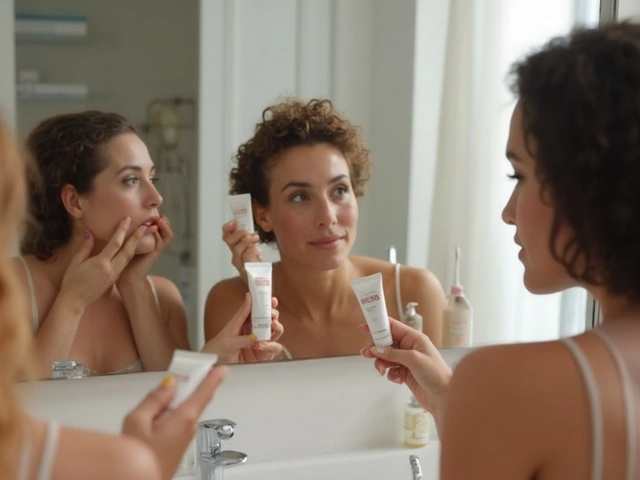
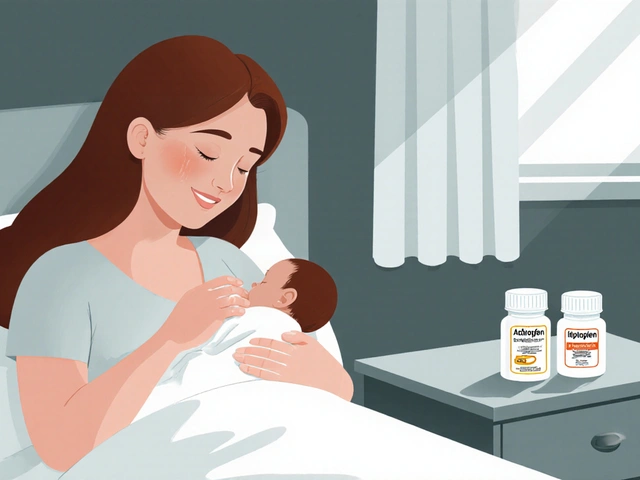
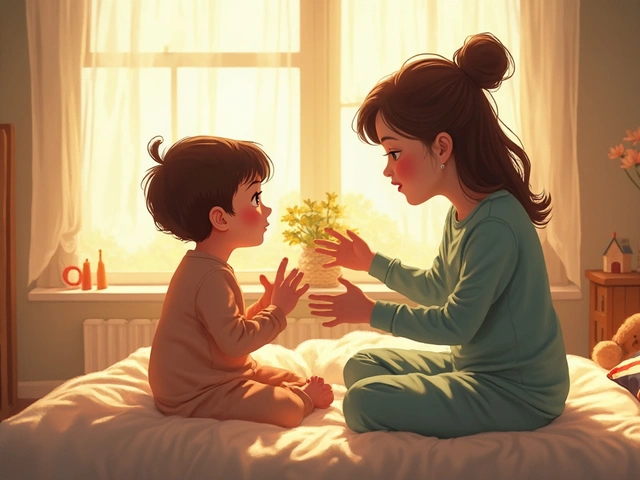
![Buy Generic Motrin (Ibuprofen) Online Cheap in Australia [2025 Guide]](/uploads/2025/08/thumbnail-buy-generic-motrin-ibuprofen-online-cheap-in-australia-2025-guide.webp)
Write a comment